- Call us: 01444 237070
- Contact Us
- Stores
- Sign In / Register
-
- Back
- Used Cameras
- Used Accessories
- Used Lenses
- Used Video
- Used Film Equipment
- Used Stock Alert
- Used Blank Test
- Sell or Part Exchange
- Used Clearance
- Recently Added Used Equipment
- Park Picks
- All Used Black Friday Deals
- Faulty
- Trade-In
- Blog
- New in
- Call us
- Contact us
- Stores
- Sign in
- Categories
- Tips & Inspiration
- Reviews
- News
- Events
- Features
- Buying Guides
- Competitions
Nikon Z6 II Review for Photography
Despite the recent Nikon Z8 camera launch, when it comes to mirrorless cameras, the Nikon Z6 II stands out as a versatile option for hybrid creators, being packed with impressive features and several upgrades over the first generation. It offers an enjoyable experience for both amateur and professional photographers and we wanted to test the body alongside the Nikon Z MC 105mm f/2.8 VR S Macro Lens review, in order to see how well they work together for photography.

In this Nikon Z6 II review we explore key technical specifications, user-friendliness, it’s most impressive capabilities for photography, build quality and the best accessories, in order to help you decide whether this is the ideal camera for your needs.
Having owned two Nikon DSLR cameras in the past I was especially keen to see how Nikon Z mirrorless cameras have evolved over the DSLR experience, for photography.
Nikon Z6 II highlight features
Following its October 2020 launch, Nikon ensured the Z6 II retained the best features from the previous generation camera, with several upgrades, which make it more of a thoroughbred option. The 24.5 megapixel full-frame sensor delivers stunning image quality and provides exceptional low-light performance thanks to a wide ISO range of 100-51,200, expandable up to 204,800.
Additionally, the Z6 II captures 14-bit RAW files, providing ample flexibility for post-processing your photos, although all of the samples in this review are straight out of camera JPEGS. Highlight features include:
- 24.5 megapixel full-frame backside illuminated sensor (same as previous gen)
- Dual Expeed 6 processors (upgraded)
- 1x XQD/CFexpress slot and 1x SD card memory card slot (upgraded)
- Autofocus from -4.5 to +19EV with Eye/Face detection for video (upgraded)
- 14fps burst mode (upgraded)
- 5-axis VR image stabilisation (up to 5-stops Syncro)
- Internal recording 4K/60p and high-speed 1080p/120p (upgraded)
- External 10-bit HLG HDR over HDMI to a video recorder such as the Atomos Ninja V. (upgraded)
- Lots of photo modes including timelapse, multiple exposure, HDR and focus stacking
There’s plenty here to warrant upgrading from the first generation and to tempt new users to the system, but how did the camera perform in the field for everyday photography?
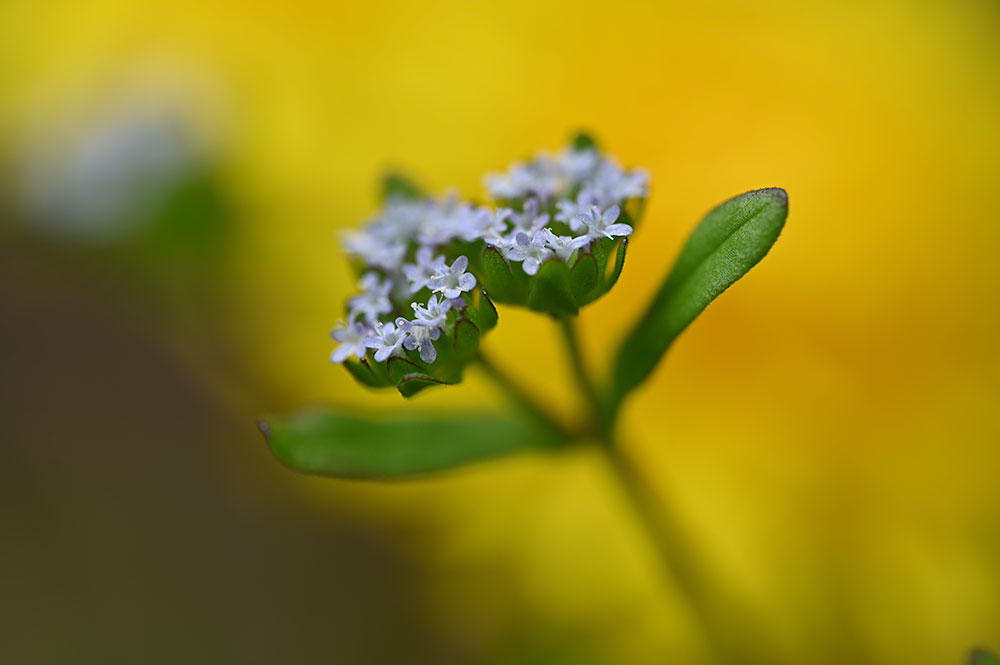
Bright yellow macro background Camera settings 1/160th sec. f/5.6. ISO 100
Nikon Z6 II hands-on in the field
With two Expeed 6 image-processing engines, the first thing you notice about the Z6 II is just how responsive it is, delivering swift performance and efficient handling of everything from starting up to reviewing images. This really makes a difference when you need to respond to situations quickly, especially while taking advantage of high-speed continuous shooting at up to 14 frames per second (fps). To put this into perspective, the flagship Nikon D6 DSLR has a single Expeed 6 processor and also captures 14fps, yet costs significantly more at £6,799.00. This is definitely a win for Nikon’s newer mirrorless system.
Aside from snappy performance, the entire shooting experience was a real revelation, with extremely responsive autofocusing using the Nikon Z MC 105mm f/2.8 VR S Macro Lens, which is built more for accuracy than speed. If you're used to AF from an older camera, the Z6 II focus performance is likely to feel incredibly quick and accurate. Even the mechanical shutter was pleasing, with a well damped sound and minimal vibrations, which is ideal when shooting from a tripod and getting sharper results.
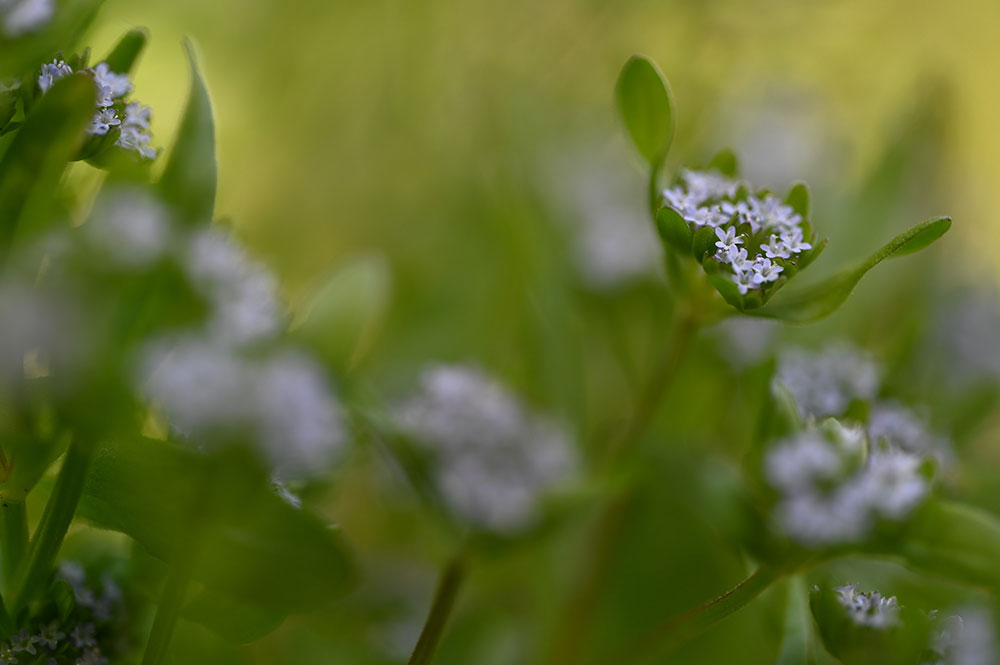
Flowers close-up Camera settings 1/200th sec. f/3.8. ISO 100
How user-friendly is the Z6 II
Navigating the Nikon Z6 II is a breeze, thanks to its intuitive and user-friendly interface. The body features a high-resolution electronic viewfinder (EVF) and tilting LCD touchscreen, that offer clear and vivid displays, making it easier to compose shots and review images. The LCD on the rear provides quick access to various settings and menu options and navigating is intuitive thanks to well placed controls and Nikon’s easy to understand menus.
I especially liked the deep camera grip, which allows you to hold the body in one hand without worrying about it slipping. If you enjoy a seamless experience while maintaining focus on the subject, the Z6 II is likely to impress. A top LCD info panel on the shoulder offers key settings at a glance, while punching in to confirm focus was excellent on the large, clear LCD screen, although a glare-free screen would be the icing on the cake!
Overall the Z6 II was an easy camera to use from the outset with well placed controls, easy to-navigate menus, a bright set of screens and comfortable deep grip. I didn’t get as far as customising the set-up, but you can tailor it to your workflow via a Z lens and six programmable buttons on the body.
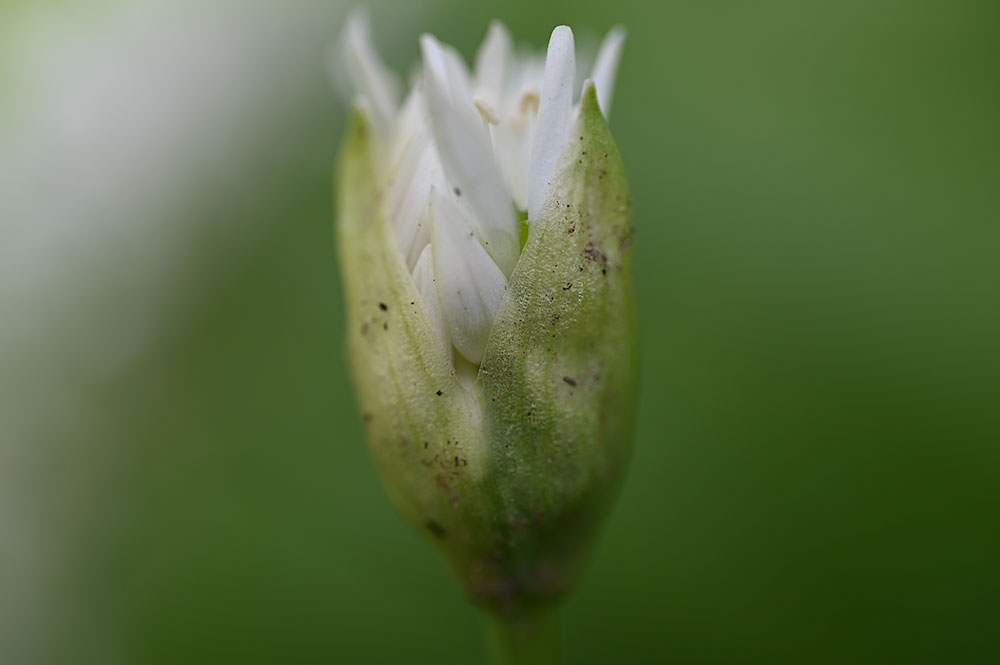
Wild garlic. Camera settings 1/125th sec. f/4.2. ISO 100
Most notable capabilities for photography
The Nikon Z6 II particularly impresses with its autofocus (AF) system, which employs a hybrid system with 273 focus points. This enables fast and accurate subject tracking, ensuring sharp and well-focused images. The eye-detection AF feature, which is now available in both photo and video modes, enhances subject such as portrait photography by accurately tracking and focusing on subjects' eyes.
Low light performance was also noteworthy, with the camera able to quickly and accurately gain focus in darker shaded areas, outdoors with beautifully clean results even at higher ISOs. If you capture faster action the 14fps will keep up with most situations and there were several opportunities to test continuous shooting, which performed effortlessly as expected.
Body image stabilisation or VR in Nikon speak is exceptional and performed incredibly well in the field while handholding the camera. It works across 5-axis, and when paired with compatible Z lenses is good for up to 5-stops of compensation, which provides more keepers.

White wildflowers. Camera settings 1/160th sec. f/5. ISO 200
The Z6 II is a great all-round camera, combining speed, low noise, accurate AF and a high buffer, which is well suited to a variety of subjects, including:
- Wildlife photography
- Portraits, street photography and lifestyle
- Landscape photography (consider the more expensive Z7 II for its higher resolution)
- General snapshots and as a walk around camera
- Video
Z6 II for video
Although I was only shooting stills, video enthusiasts will appreciate the Z6 II's ability to record 4K UHD footage at up to 60 frames per second, in various video formats, including H.264 and H.265. You also get advanced features like focus peaking and zebra patterns for precise manual focusing and exposure control, which is beyond comparably priced DSLR bodies like the D850, which captures 4K/30p.

Wood anemone. Camera settings 1/250th sec. f/3.3. ISO 100
Build quality and handling
The Nikon Z6 II exudes durability and reliability with its robust build quality. A magnesium alloy body provides excellent protection against dust and moisture, making it suitable for shooting in challenging environments. The camera's solid construction and weather sealing ensures it can withstand the rigours of professional use, giving photographers peace of mind in any shooting conditions. While testing I was caught in rain several times with no issues at all and would be happy to take the camera anywhere.
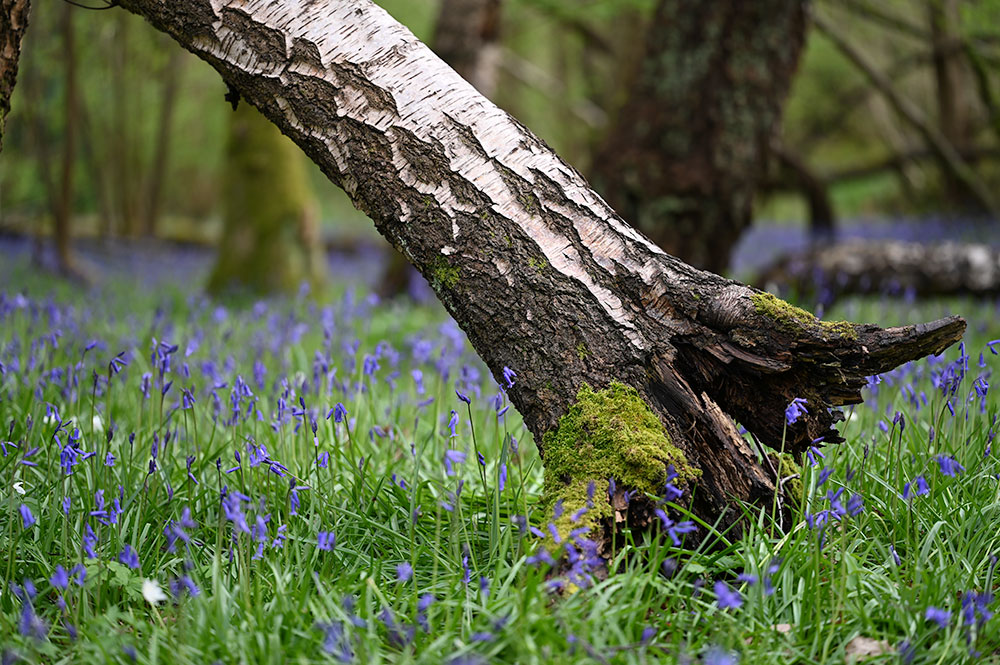
Fallen tree. Camera settings 1/125th sec. f/2.8. ISO 100
Nikon Z6 II image quality
Nikon cameras have a reputation for their high-quality image sensors and the Z6 II follows this trend, with a 24.5 megapixel full-frame backside illuminated sensor showing simply gorgeous results straight out of camera. Images are sharp, with well controlled artefacts and the hit rate was high when using AF and the effective IBIS (VR).
Noise wasn’t a consideration at slightly higher ISOs and shady or defocus areas were smooth and clean, aided by the mirrorless Z lens I was shooting with. A camera is only as good as its glass and it’s worth investing in the best quality lenses you can manage.
There are now dozens of Nikon mirrorless lenses to choose from, which increases as you can mount DSLR F lenses with an FTZ Mark II Mount Adapter. Third party manufacturers have also begun releasing Z lenses, so there are plenty of options for any type of photography and video creation. This brings us neatly onto accessories for the Z ecosystem and this model in particular.
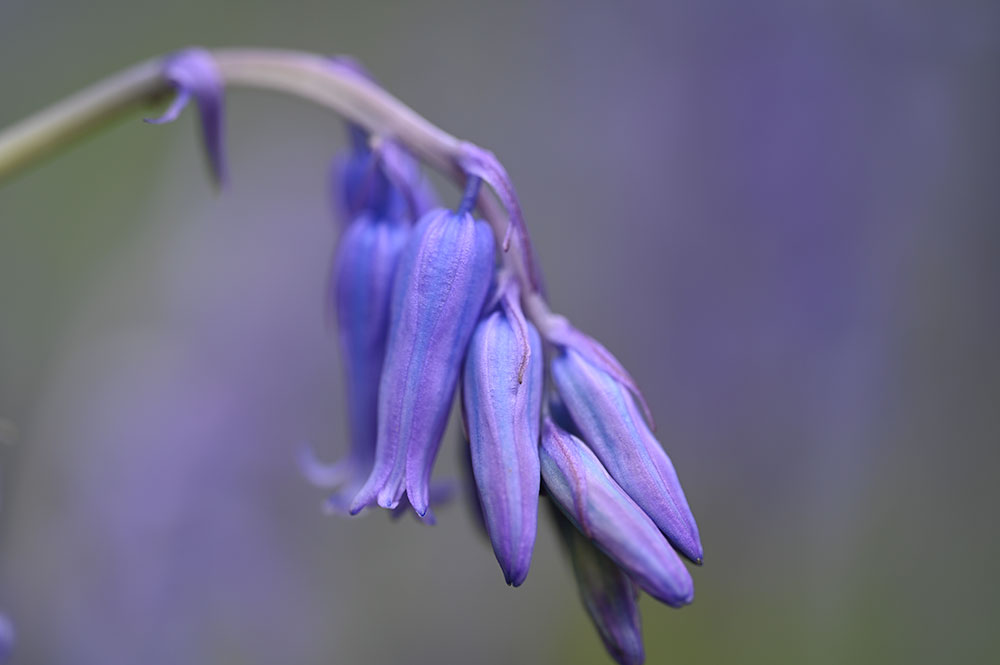
Bluebells macro. Camera settings 1/100th sec. f/3.8. ISO 100
Best accessories for the Nikon Z6 II
Extra Nikon EN-EL15C batteries will extend your shooting sessions and are essential for the Z6 II, which offers between 3-400 shots per battery. You can also opt to add extra batteries in either the Nikon MB-N11 Battery Pack (£359.00) or MB-N10 (£179.00), which is a good idea for studio work in particular.
Nikon offers a range of Speedlight flashes that can be wirelessly controlled and synchronised with the Z6 II, providing versatility with Nikon’s CLS creative lighting control. If you shoot in the studio, lifestyle, portraits and similar subjects, artificial lighting can help to elevate your images.
The Z6 II features dual memory card slots and it is recommended to use XQD or CFexpress cards for maximum performance and reliability. These high-speed cards offer ample storage capacity and rapid data transfer rates, allowing for uninterrupted shooting and smooth video recording. You can also utilise more accessible SD cards with UHS-II compliant versions being the fastest, which you can learn all about in our memory cards explained editorial.
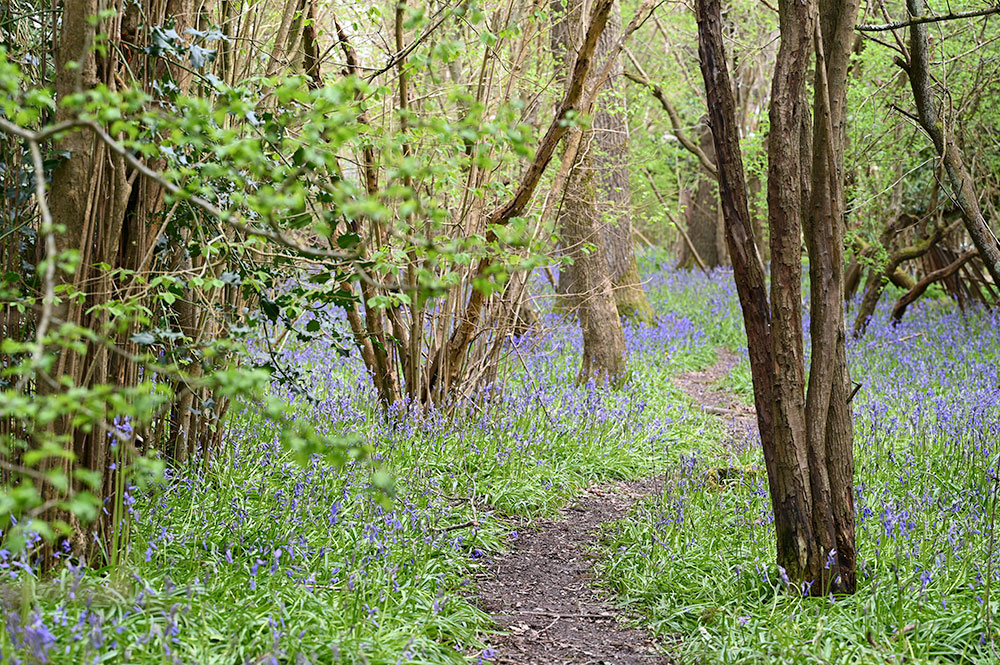
Bluebell path. Camera settings 1/10th sec. f/8. ISO 100 (tripod mounted)
In summary, the Nikon Z6 II is a true powerhouse that can help you transform ordinary moments into extraordinary images. With its technical competence, user-friendly design and exceptional capabilities, the Z6 II empowers photographers to push the boundaries of their creativity and capture breathtaking images that will leave a lasting impression with your audience.
Nikon’s mirrorless system offers a different experience when compared to shooting with DSLRs such as the D700 and D800, and even snaps at the heels of professional models like the D6 and D850. AF subject detection, stabilisation, image quality, speed and ease of use are just some of the advantages, which reward mirrorless photographers.
Reserve your new Nikon Z6 II today or scan our range of used Nikon cameras to save with a Nikon Z6 II used, and embark on your creative photography journey with this thoroughbred second generation camera.
Share this post:
By Nick Dautlich on 09/05/2023
Nick Dautlich
Senior Content Writer and Product Reviewer
Nick Dautlich is the Senior Content Writer and Product Reviewer at Park Cameras, with over 15 years of photography experience. A Sony Imaging Professional and expert reviewer, Nick has worked with major brands such as Canon, Sony and Nikon. His work is also featured on Vanguard World UK’s website, Capture Landscapes, and Shutter Evolve. Nick’s photography includes National Trust projects and magazine covers and he is passionate about landscapes and storytelling. Nick also enjoys hiking and teaching his children about nature. Learn more on his profile page.

Trade in your old equipment
Fast and easy trade in service ensures your old gear is collected efficiently and you are paid quickly! It's very simple to trade in your unwanted photography gear. Just head over to our dedicated Sell or Part Exchange page, fill out the details, and we'll get back to you with an offer for your old gear. Take the cash, or put it towards the cost of your new gear. It's up to you! Find out more
sign up to the newsletter
Keep up to date on the latest photography news, events and offers. Sign up now